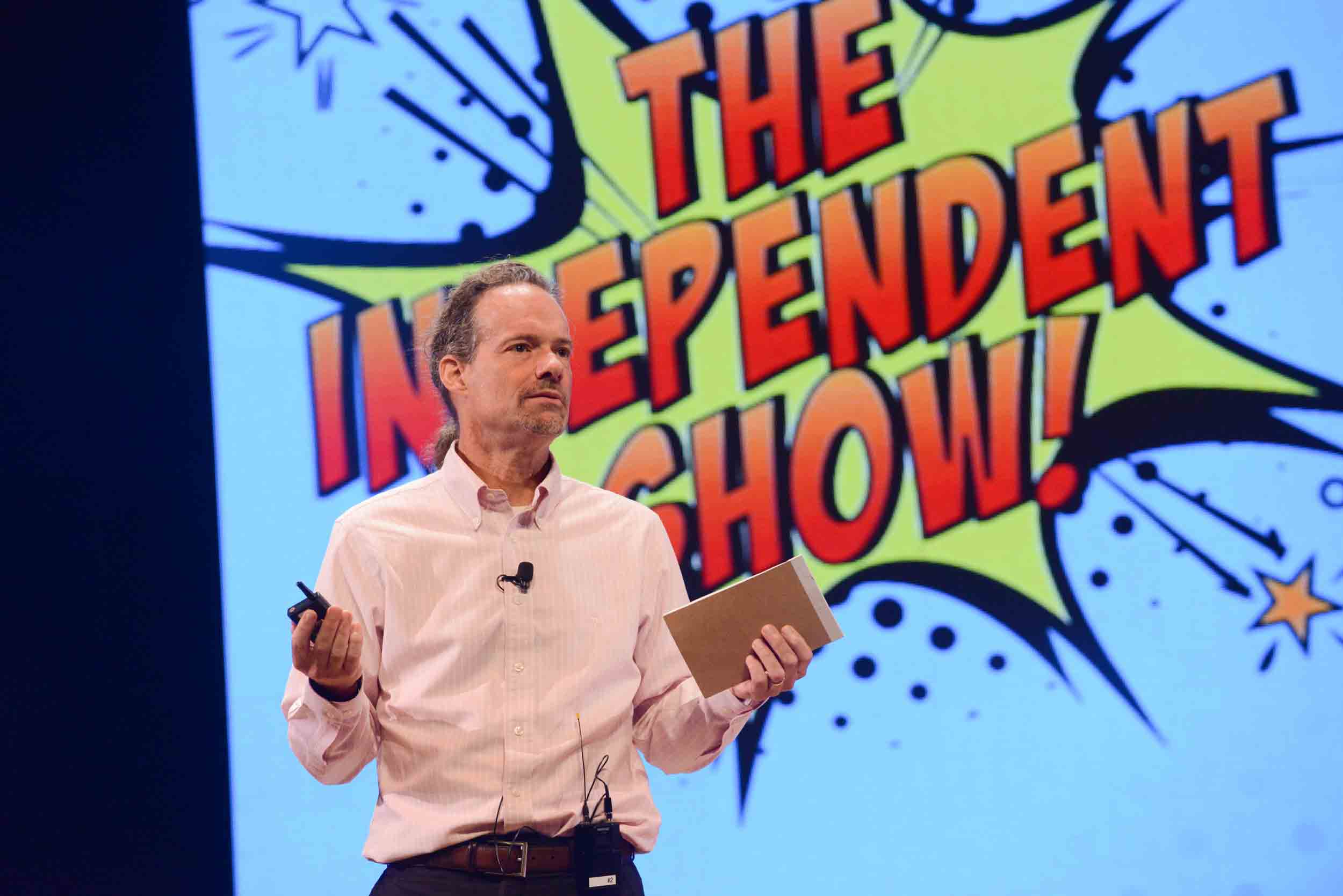Pricing Sports Out of the Lineup
ANAHEIM, Calif. — Sports teams and networks could find themselves in a spot in the next five years, as the windfall in rights fees expected as online players like Amazon and Facebook enter the fray could force distributors to make tough decisions on which channels to keep, according to Sanford Bernstein media analyst Todd Juenger.
Juenger, making a presentation at The Independent Show, said that for most distributors, the rising cost of sports has been a conundrum: live games drive TV ratings, but a shrinking number of consumers consider sports channels to be must-have.

Some 40% to 60% of viewers don’t care about sports, Juenger said, and that indifference is global. Even in soccer-mad England, where the English Premier League is available a la carte, only about half of video subscribers pay for it, according to Juenger. In the U.S., the Super Bowl may draw an audience of 150 million people, but that still means half of the country isn’t watching.
“Do you think they want to pay you $100 a month for a video service that is mostly based on sports when they can have Netflix for $10 and Amazon for free?” Juenger asked. “I say no.”
TV Sports Costs Are Rising Fast
That is becoming increasingly evident in the subscriber erosion over the past seven years at the premier sports channel, ESPN. According to Juenger, ESPN has lost about 13 million subscribers since 2011. At the same time, overall sports programming costs have increased by $10 billion.
The trends are not good among younger viewers. According to millennial market researcher Ypulse, the percentage of 13-to-36-year-olds in the U.S. who say they watch sports live on TV is down to 63%, from 86% two years ago.
Multichannel Newsletter
The smarter way to stay on top of the multichannel video marketplace. Sign up below.
“They [ESPN] are asking you guys to pay 7% escalators each year,” Juenger said. “You’ve still got 87 million households paying for sports, but only 60 million want it. I don’t think you can continue to get money from people for sports they don’t want to watch.”
Some analysts believe the advent of legal sports betting — approved by the U.S. Supreme Court in May — could help boost ratings and draw in viewers who may have not watched live games in the past. Others aren’t so sure.
Pivotal Research Group media analyst Brian Wieser said in a recent client note that live sports viewership is largely driven by big events. When those tentpoles are taken out of the mix, viewership shows a steep decline.
“In contrast to news, sports has struggled generally, although the genre still remains an important source of viewing of traditional TV,” Wieser wrote. “In aggregate, it represents an outsized source of costs, revenues and strategic leverage between networks and distributors.”
Adding to the pressure is that programming margins are pretty anemic already, and could drop to zero in the next five years. According to Juenger, Disney’s deals for NFL Monday Night Football and Major League Baseball expire in 2021, while its National Basketball Association pact ends in 2024-25. Fox’s MLB deal also ends in 2021, and its NFL pact expires in 2022.
“Does anybody think that Amazon, Facebook and Google have no interest in this?” Juenger asked. “In the next round, they are going to be knocking at the door, and they are going to be bidding more, not less. So your network partners are going to be faced with this decision, ‘Do I try to outbid Mark Zuckerberg and try to pass it on to you guys, or do I walk away from sports?’ ”
Operators have three choices, Juenger said: Keep every channel, pass along the increases to consumers and continue to lose subscribers; keep paying high fees, don’t raise prices and make up the difference on broadband (as large operators like Comcast are doing); or make a tough decision and start dropping networks.
“You can’t keep paying everybody more money on the network side, to resell a multichannel video product that you will be reselling at a loss,” he said. “So the calculus you have to do is, ‘Who am I paying that my consumers care about the least?’”
Juenger added that it would be hard to drop Disney, which has ESPN but also Disney Channel, ABC and Freeform, and after its mega-deal with 21st Century Fox closes, will include FX, FXX and National Geographic. But other segments are experiencing similar declines to sports, and that may offer relief for some operators.
Cut Back on Kids’ Fare?
Viewership in the children’s segment was down 28% in the last quarter — its worst in history — after already having fallen by half in the past six years, Juenger said. The only business segment that has had a similar drop in the past six years is national retailer Sears.
“Why are MVPDs continuing to force every household to pay for five or six kids’ networks, when the data says only 40% of households have kids at all, and among the 40% that have kids, they aren’t watching?” Juenger continued. “Because of the Internet being able to distribute video at scale now, consumers have alternatives.”
That could play into the trend, especially among smaller cable operators, to offer broadband-centric packages that emphasize access to SVOD offerings like Netflix and Hulu rather than traditional content bundles, he added. “Maybe there is a better solution for you [consumers] than a $90 cable package with 150 networks of which you only want three,” Juenger said.
